Abstract
1. Four giant neurones, designated G-H cells, in the right pleural ganglion of the marine pulmonate mollusc, Onchidium verruculatum, showed characteristic membrane hyperpolarization during applications of either acetylcholine (ACh) or L-glutamate. In the presence of ACh the membrane was hyperpolarized only transiently, while in the presence of glutamate the response was maintained. Significant increases in membrane conductance accompanied the changes in membrane potential.
2. In excess potassium sea water, a slight hyperpolarization occurred when the normal concentration was increased between one- and twofold. However, depolarization usually occurred when the concentration was increased tenfold except on a few occasions when a slight but definite hyperpolarization occurred. These changes were all accompanied by a substantial increase in the membrane conductance. This hyperpolarization was in all probability the result of an increase in chloride ion permeability caused by the release of an ACh-like transmitter from depolarized presynaptic nerve terminals.
3. The reversal levels for glutamate- and ACh-induced hyperpolarization respectively were approximately — 20 and — 17 mV with respect to the resting membrane potential.
4. By changing the external ion composition, glutamate- and ACh-induced hyperpolarization were shown to be the result of an increased permeability of the subsynaptic membrane to potassium and chloride ions respectively. It appears therefore that inhibition in the same G—H cells can be activated by two different transmitter substances and that each of them activates a change in the membrane permeability to a different ion.
5. The relationship between the concentration of glutamate and the membrane conductance change was suggestive of two glutamate molecules reacting with a single receptor site.
Full text
PDF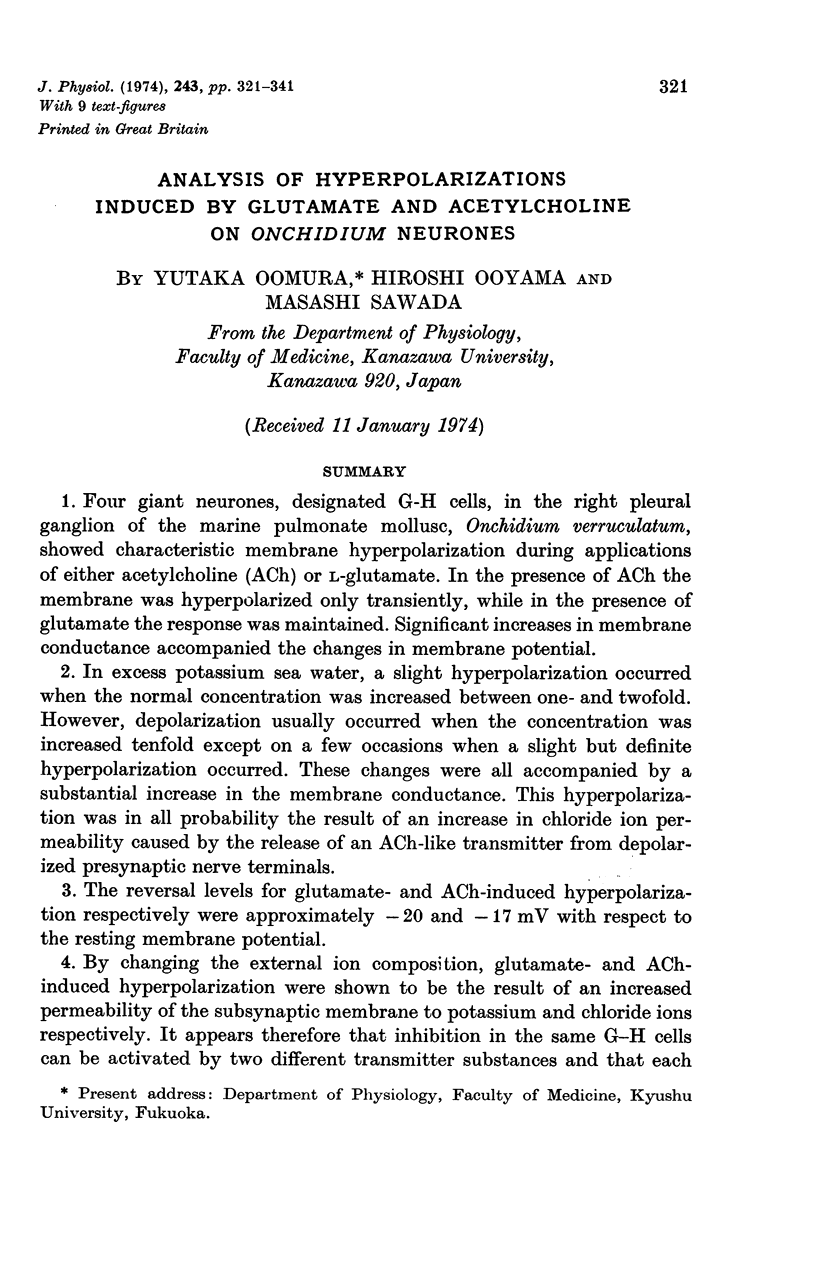
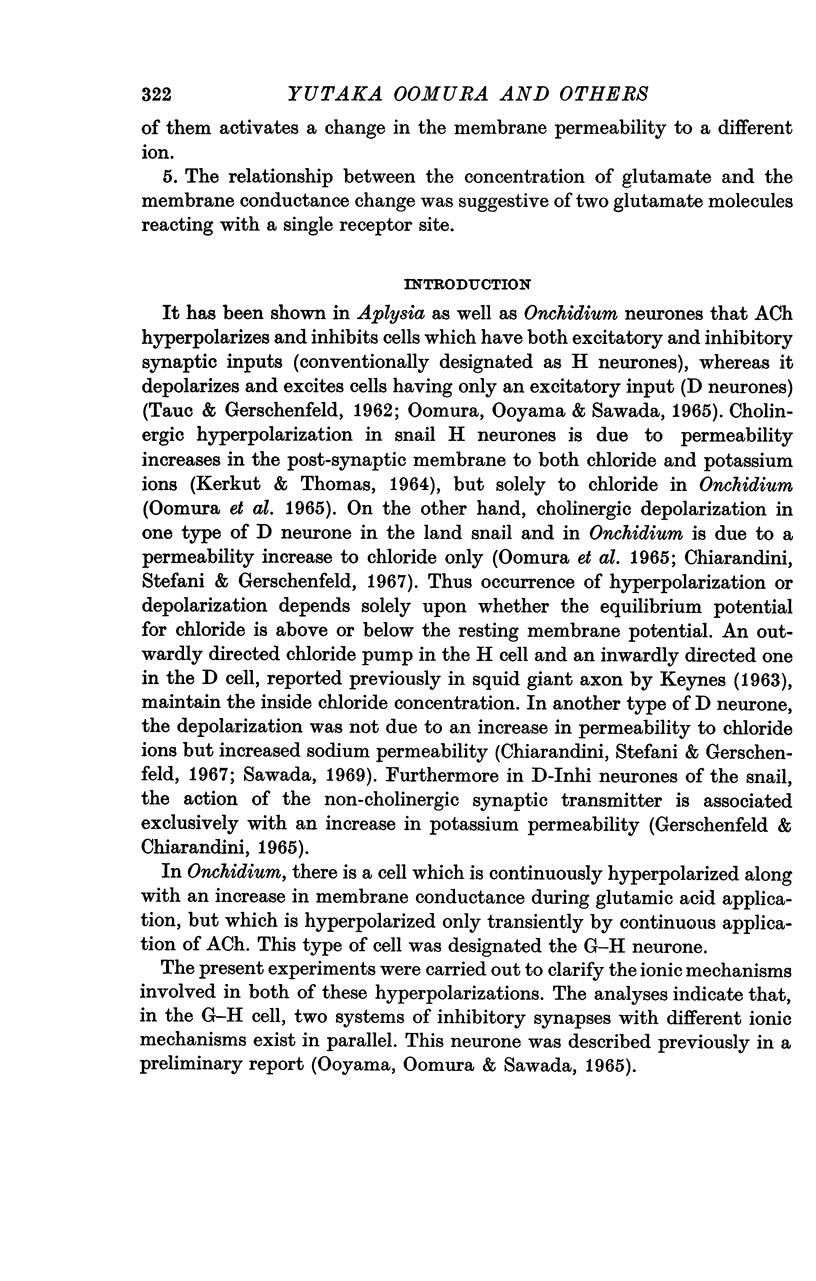
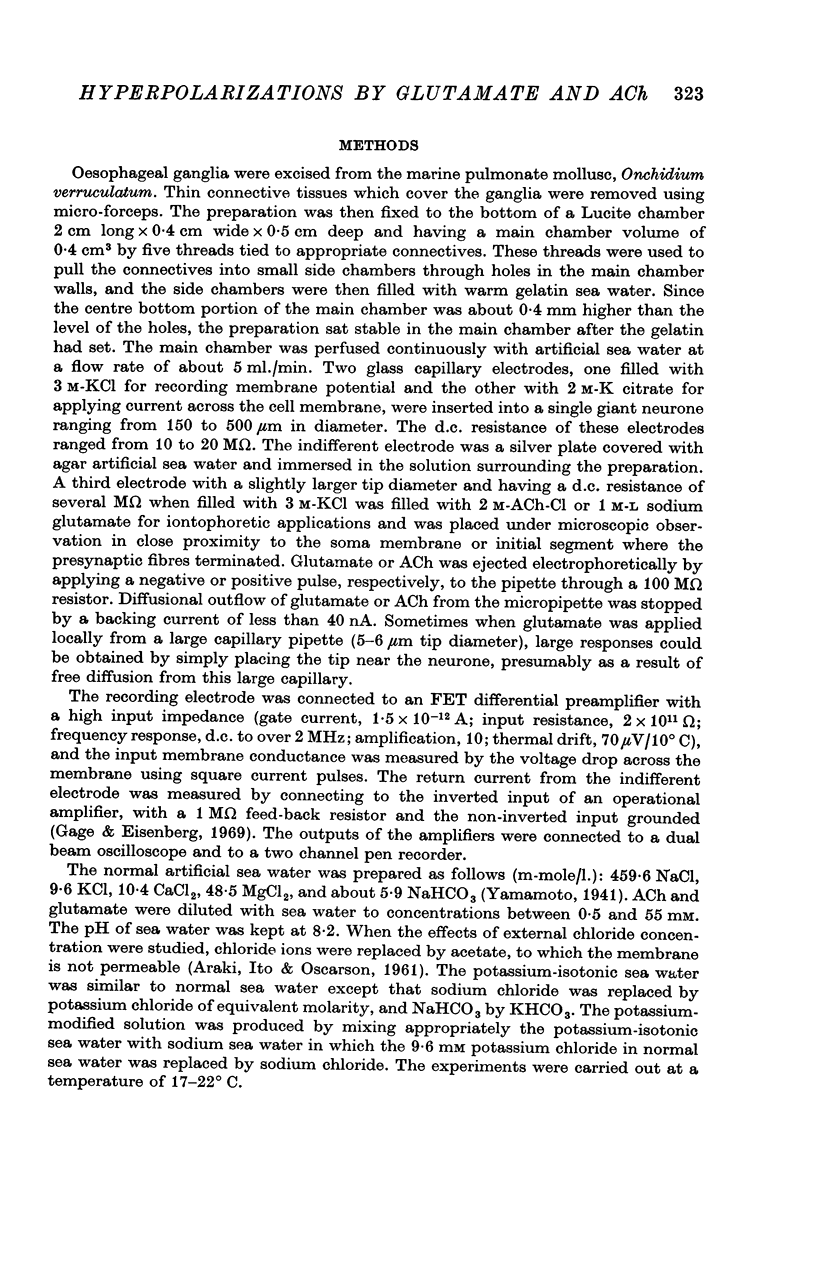
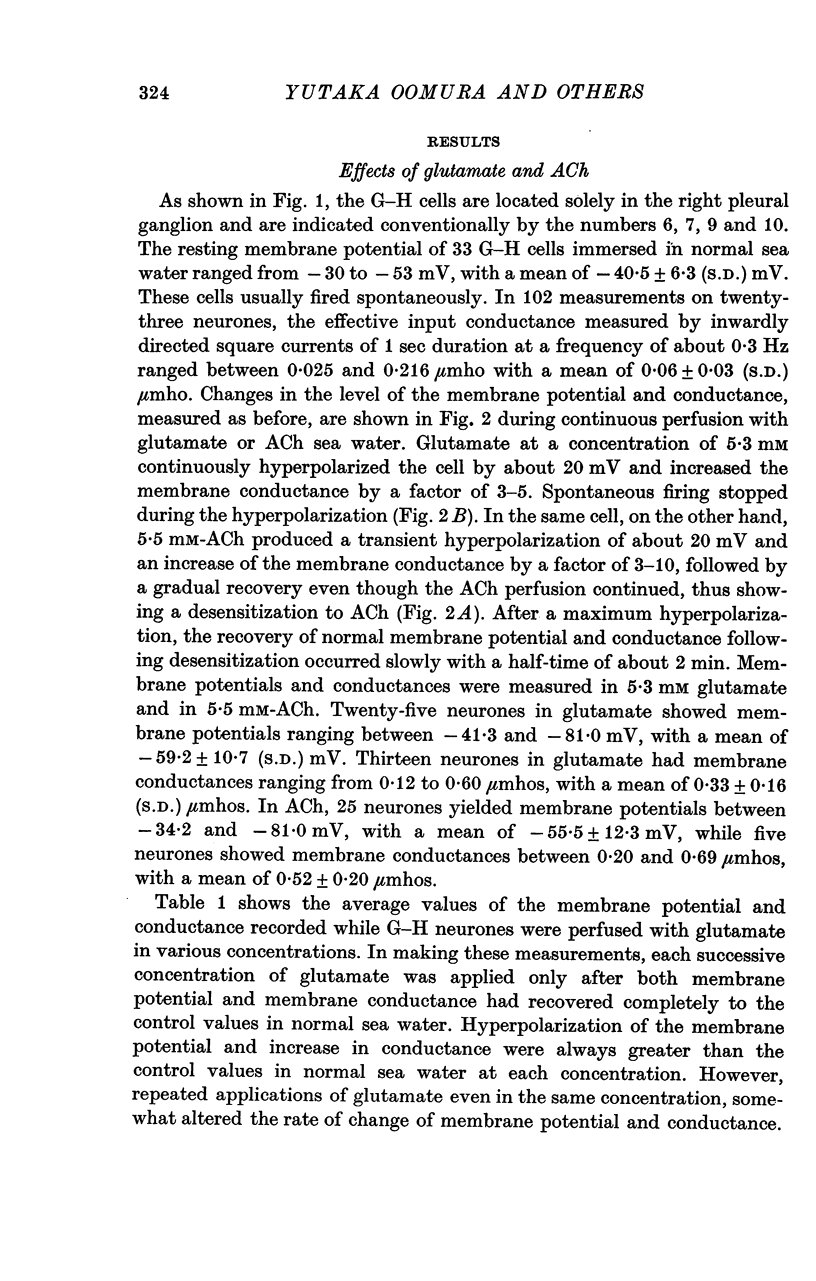
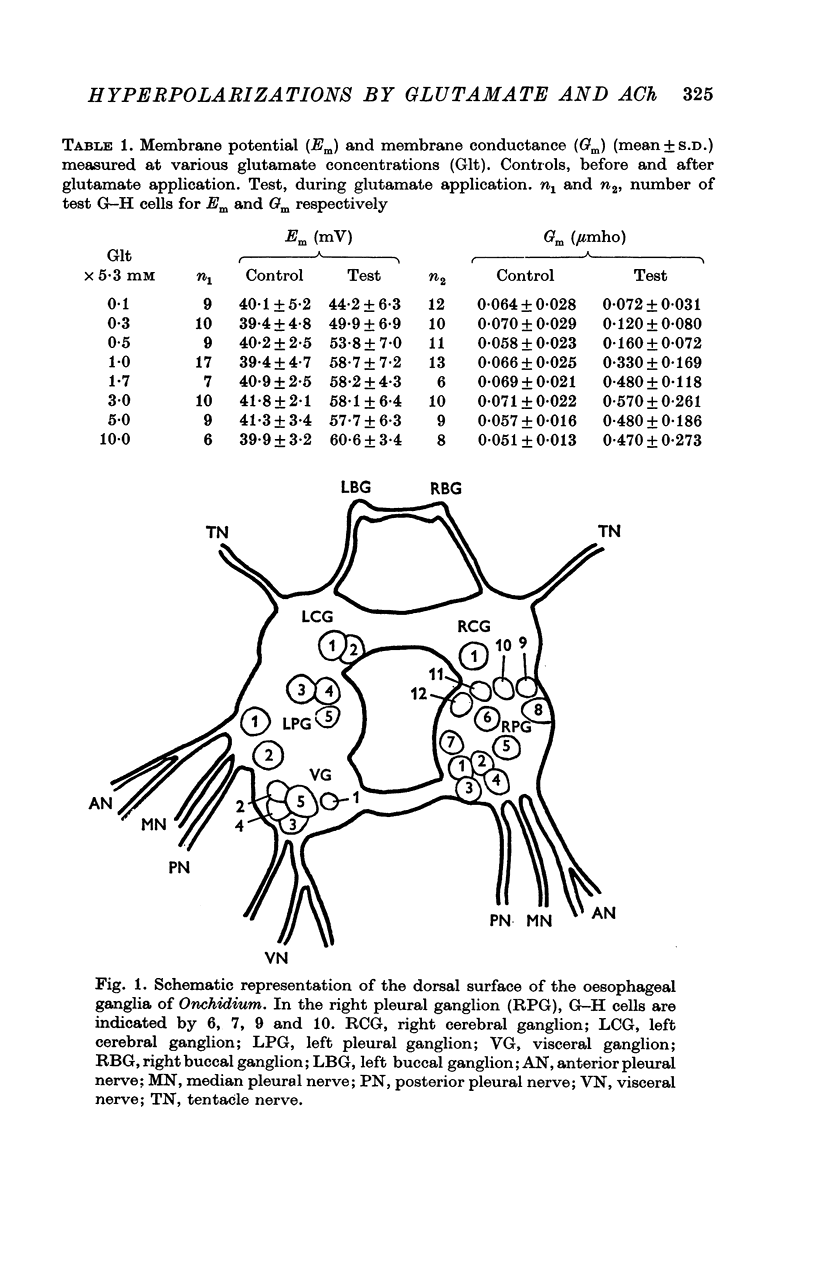
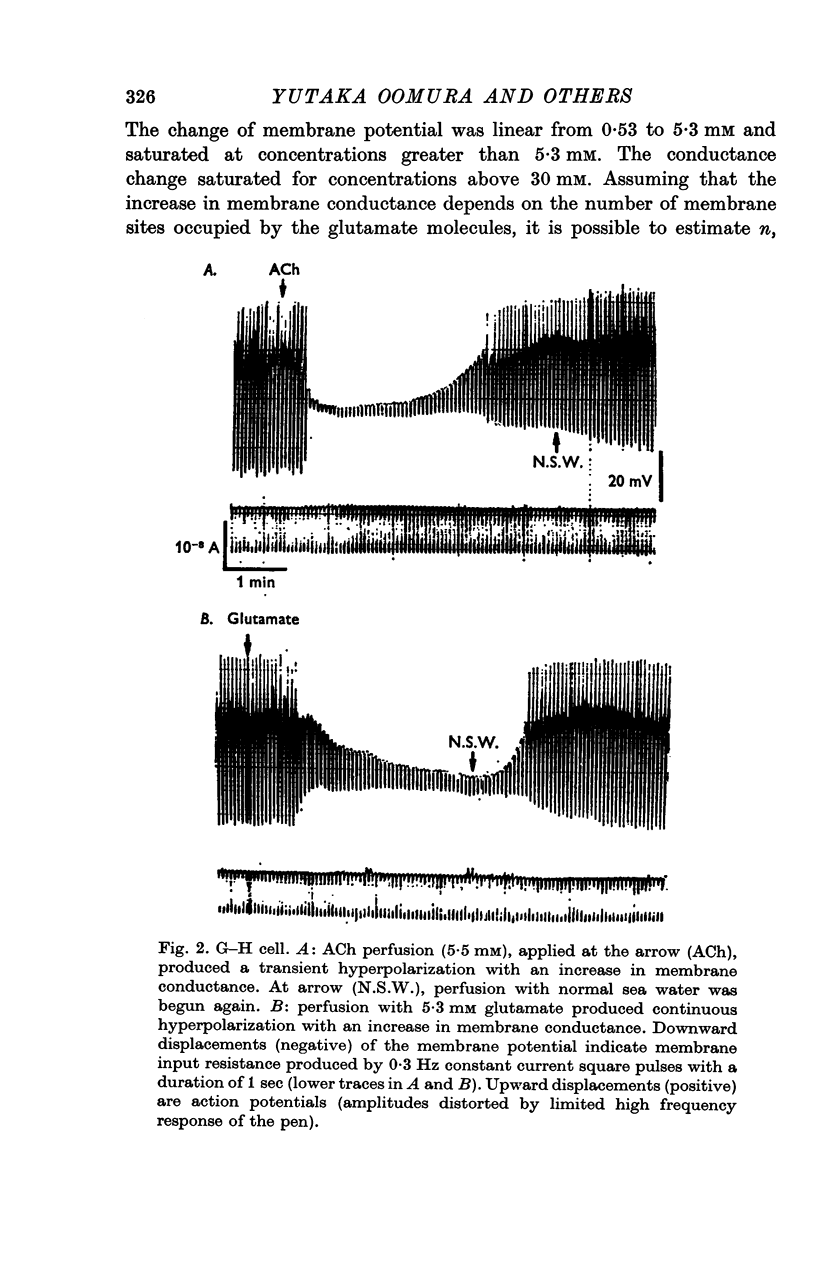
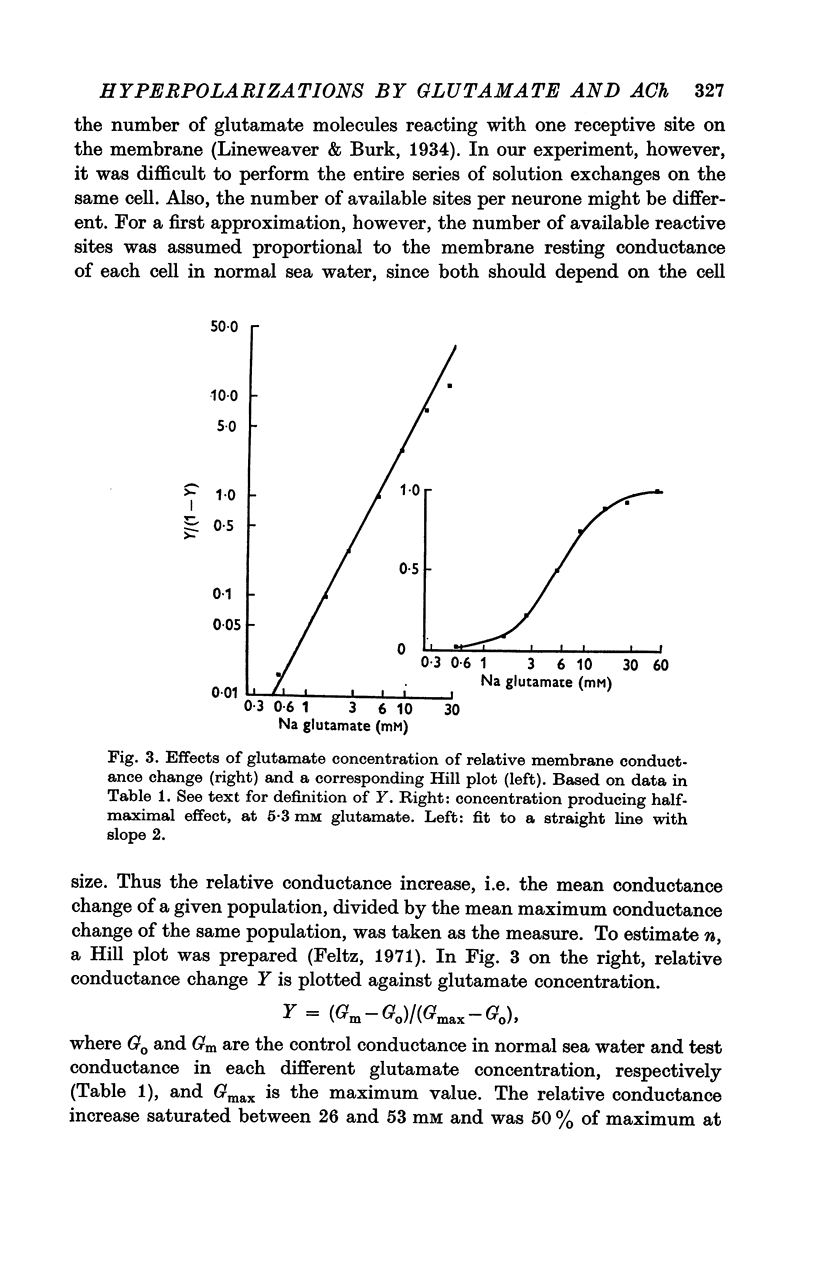
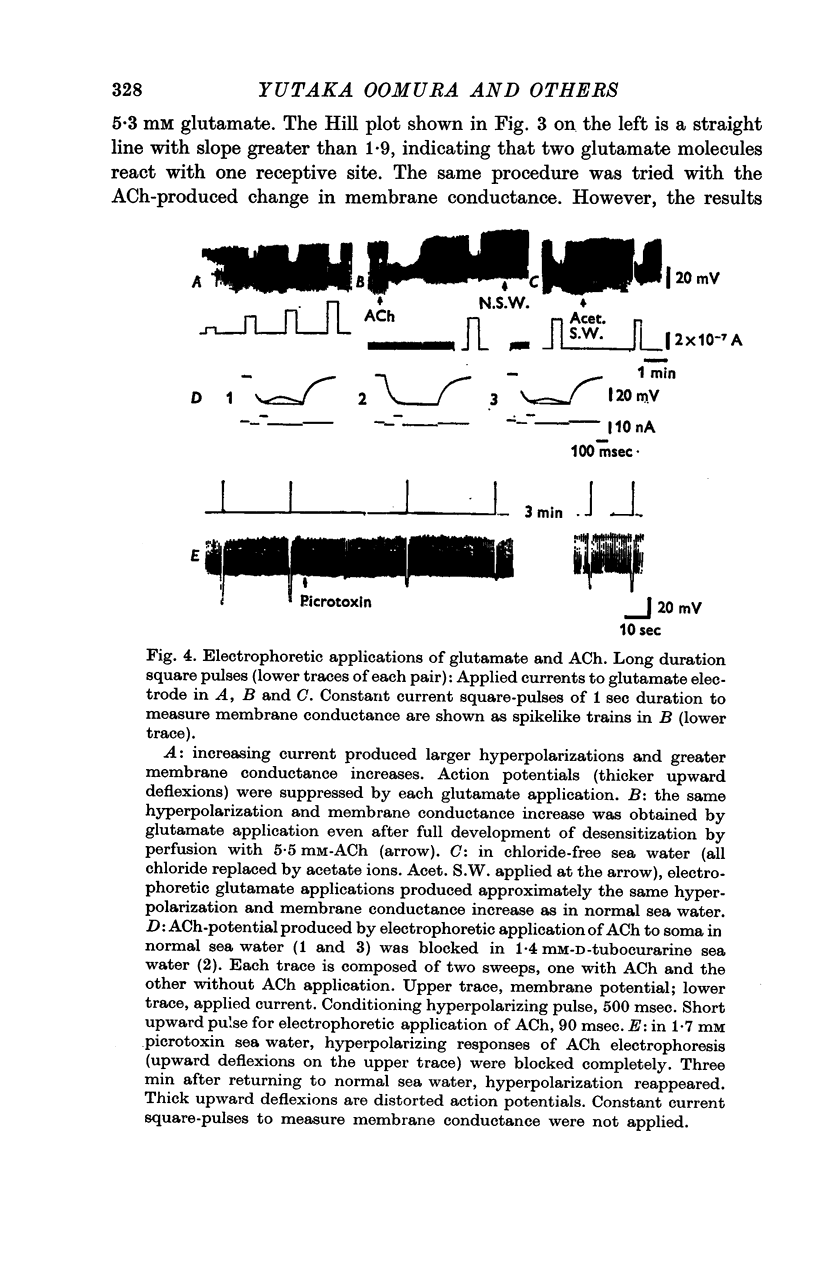
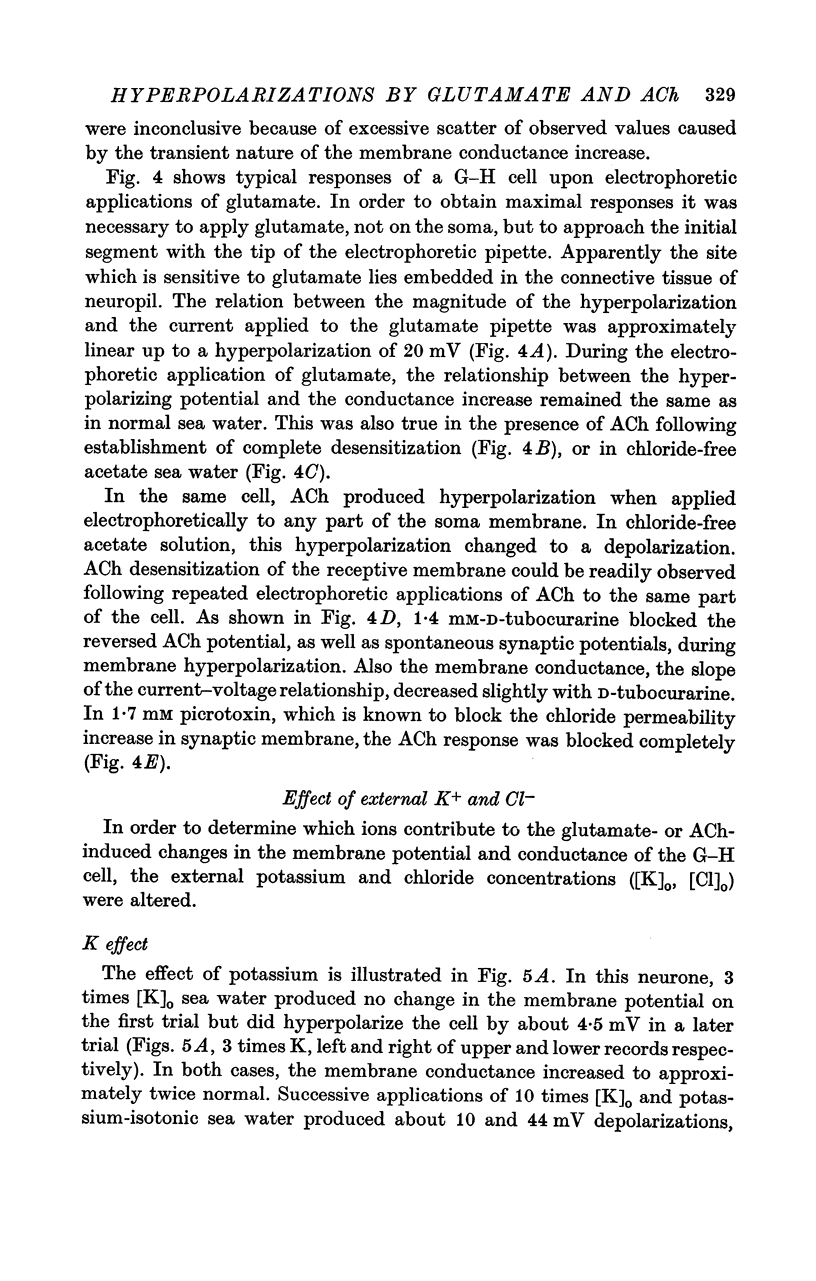
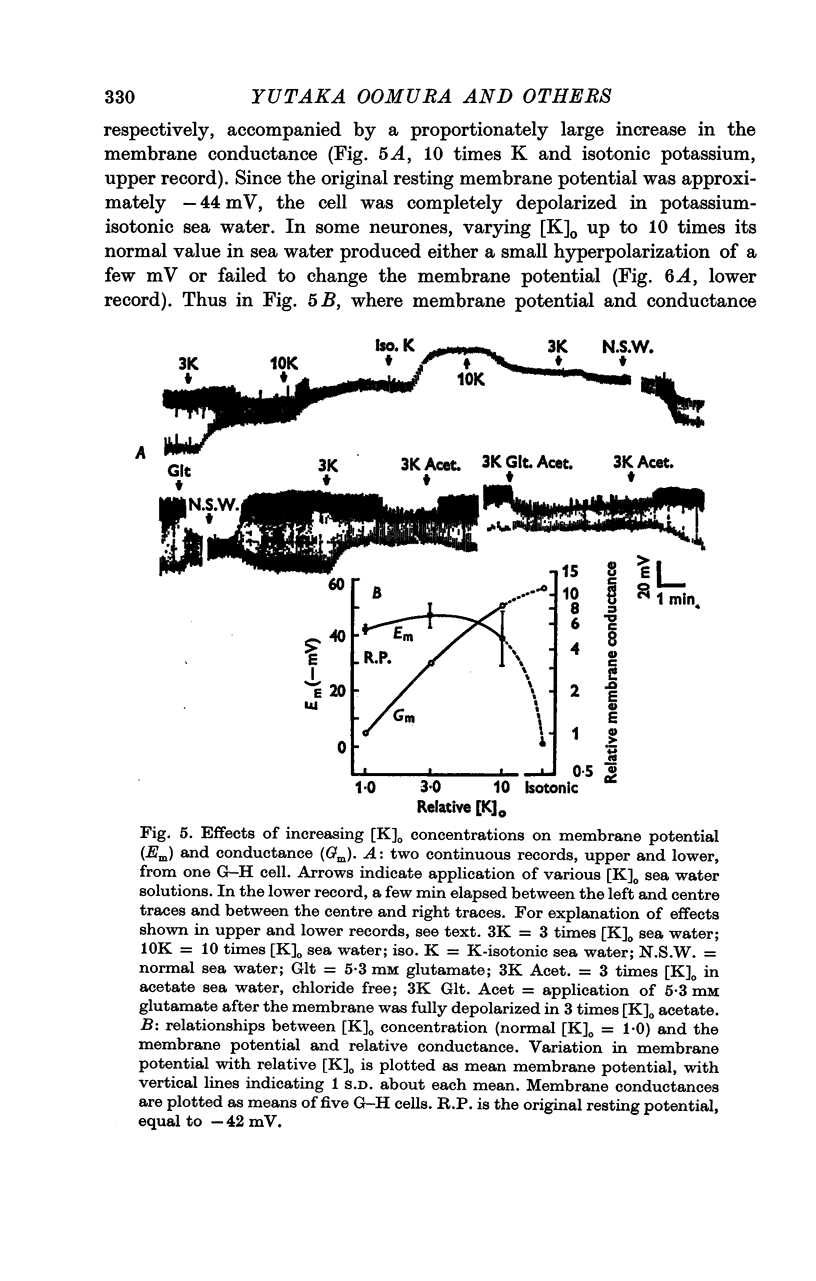
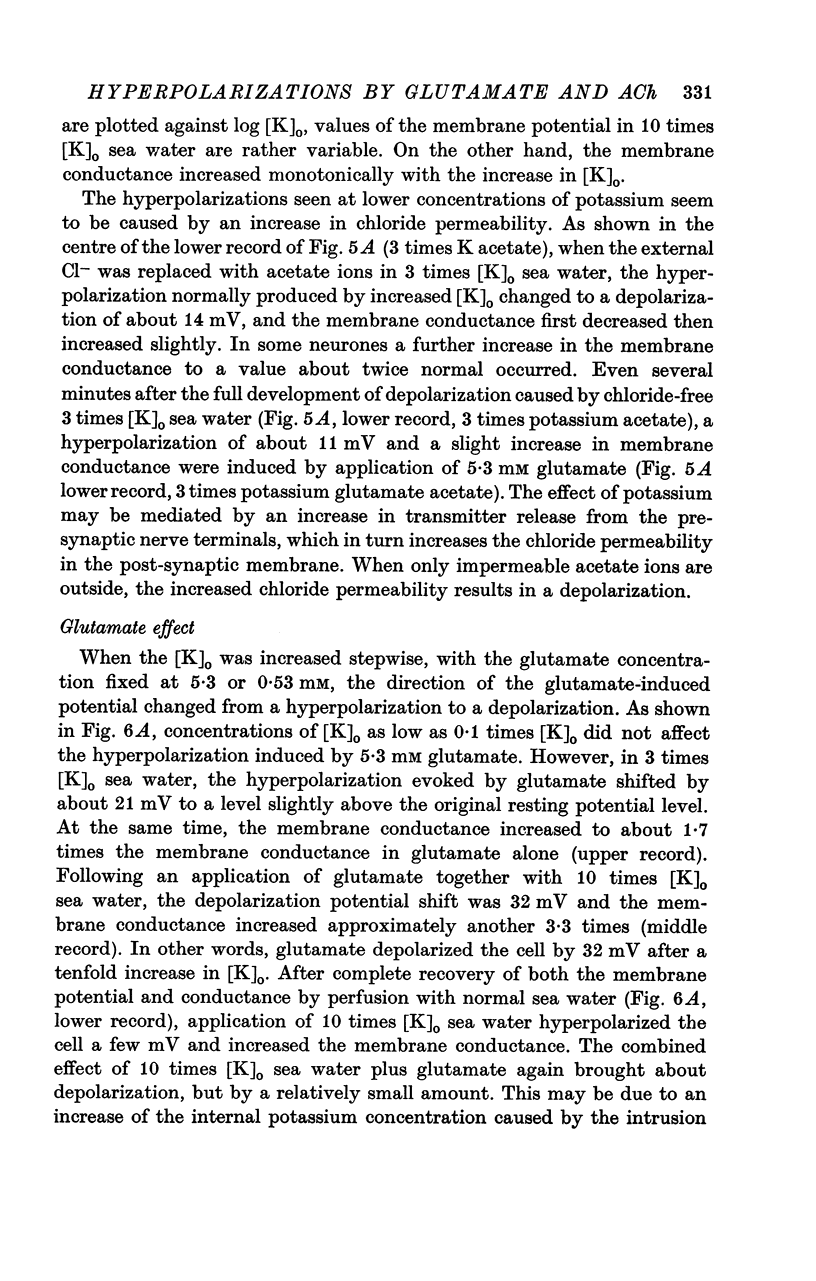
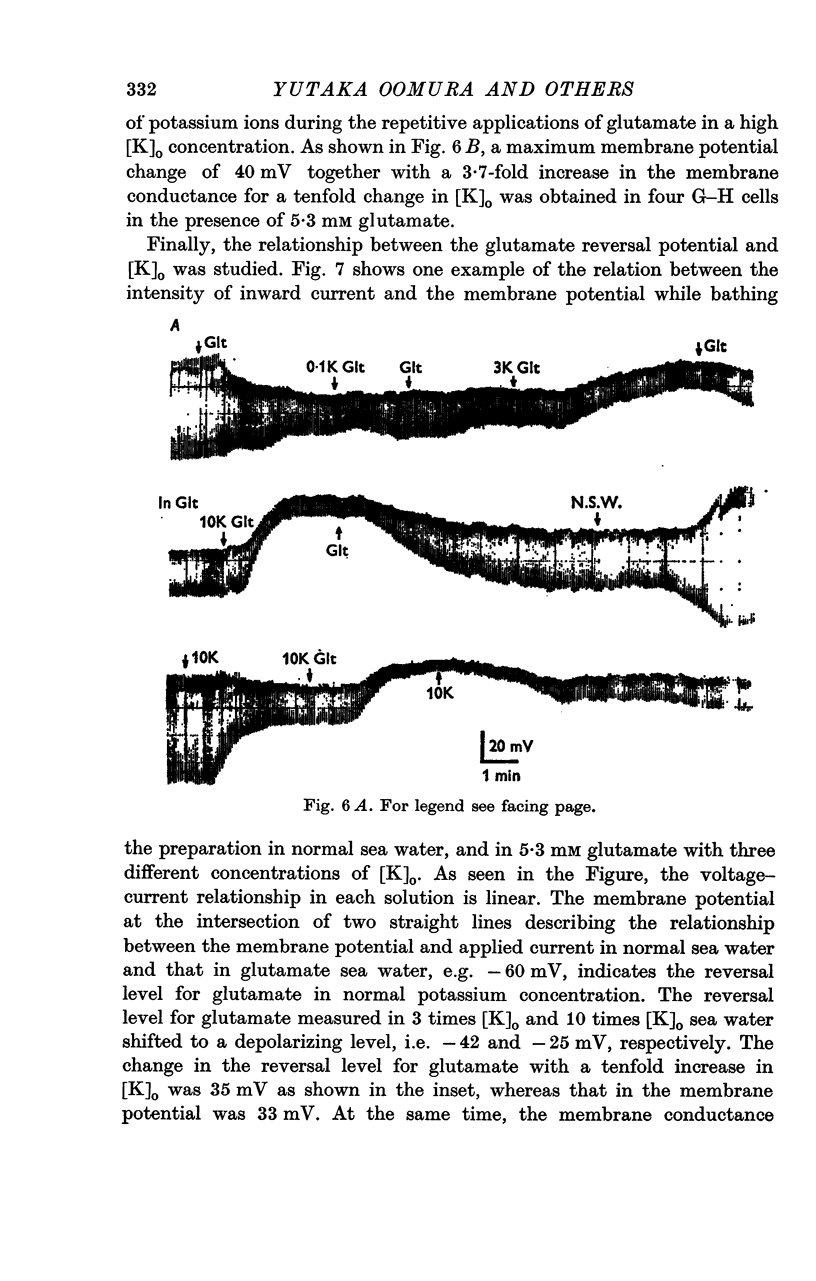
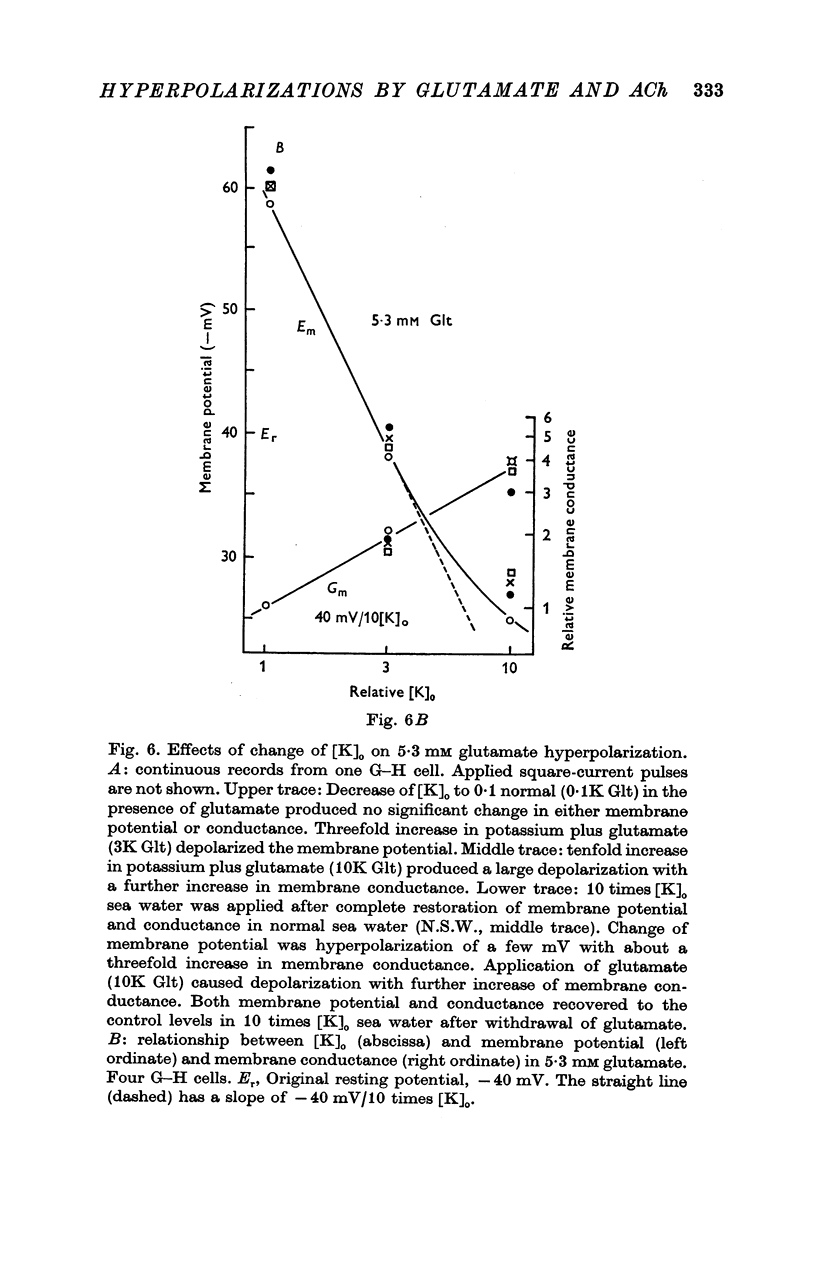
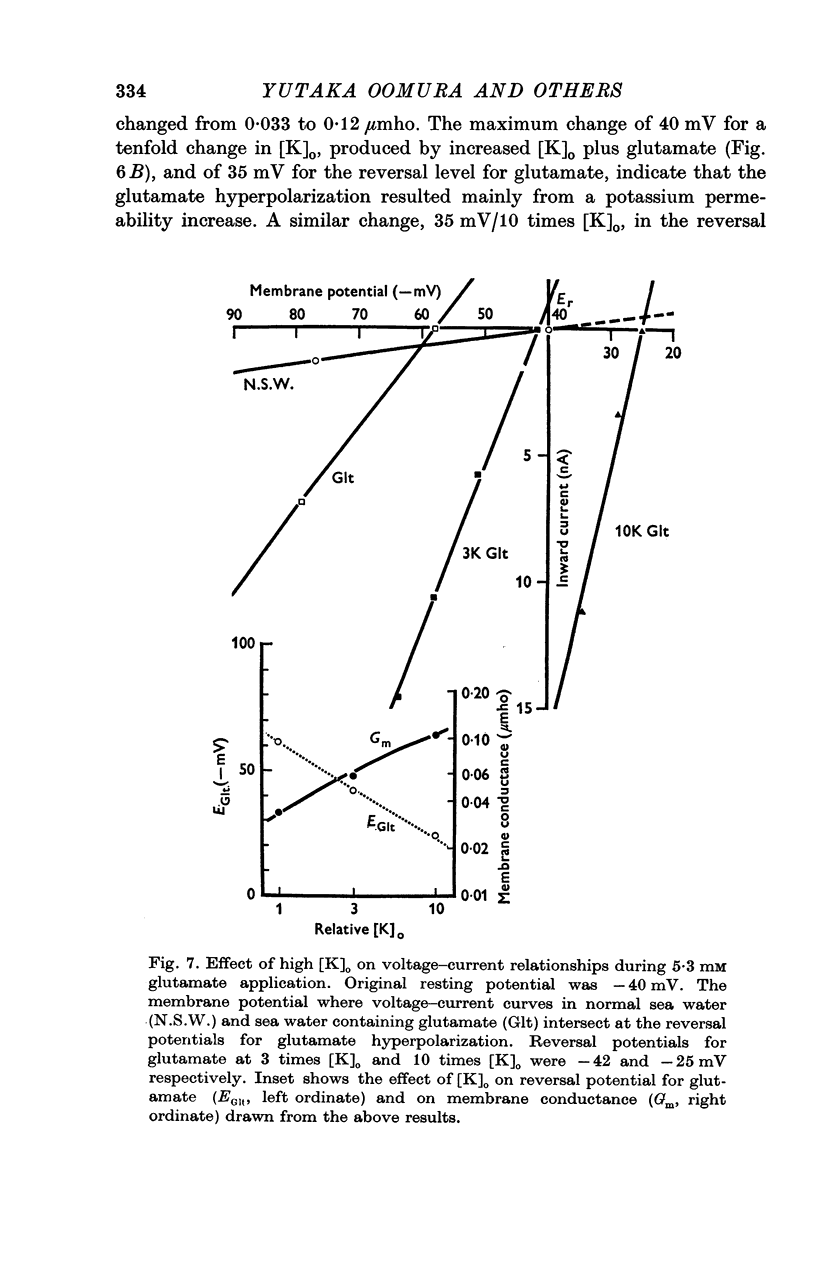
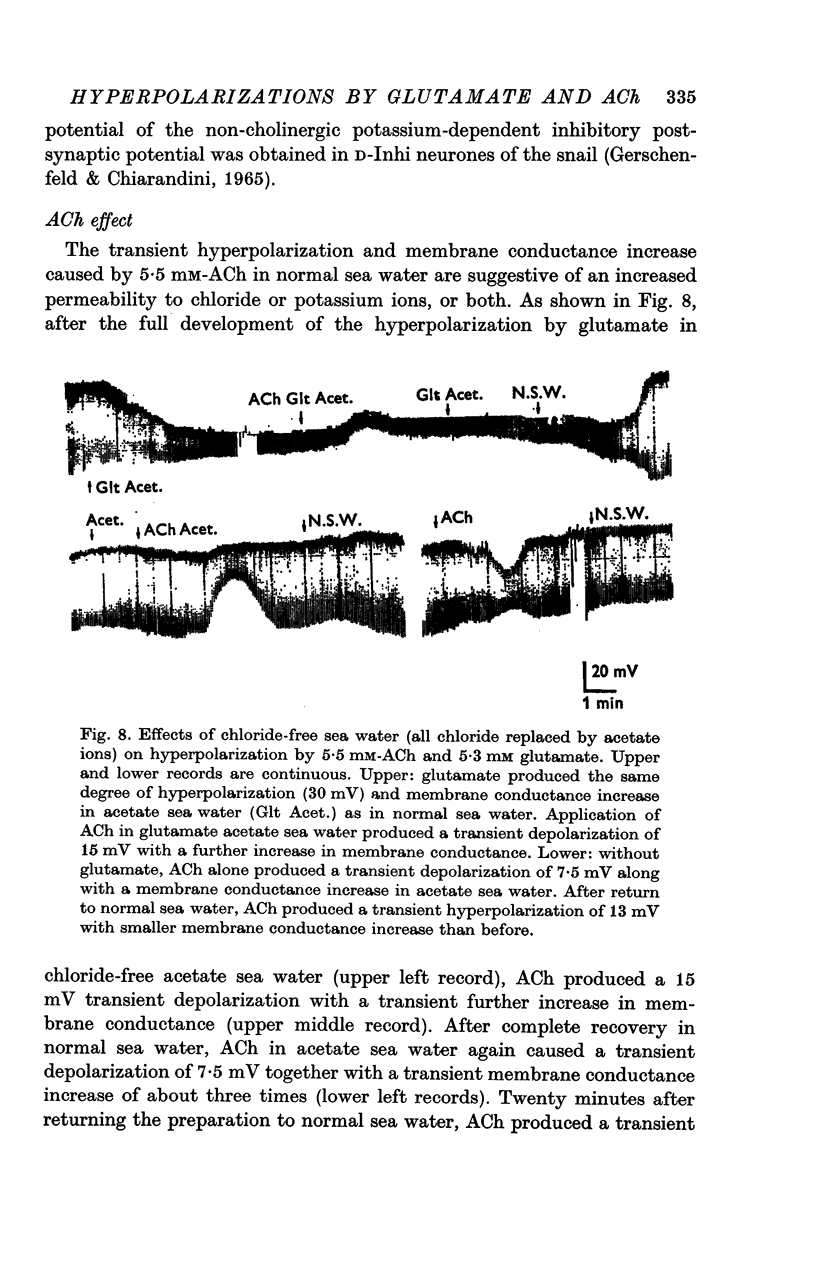
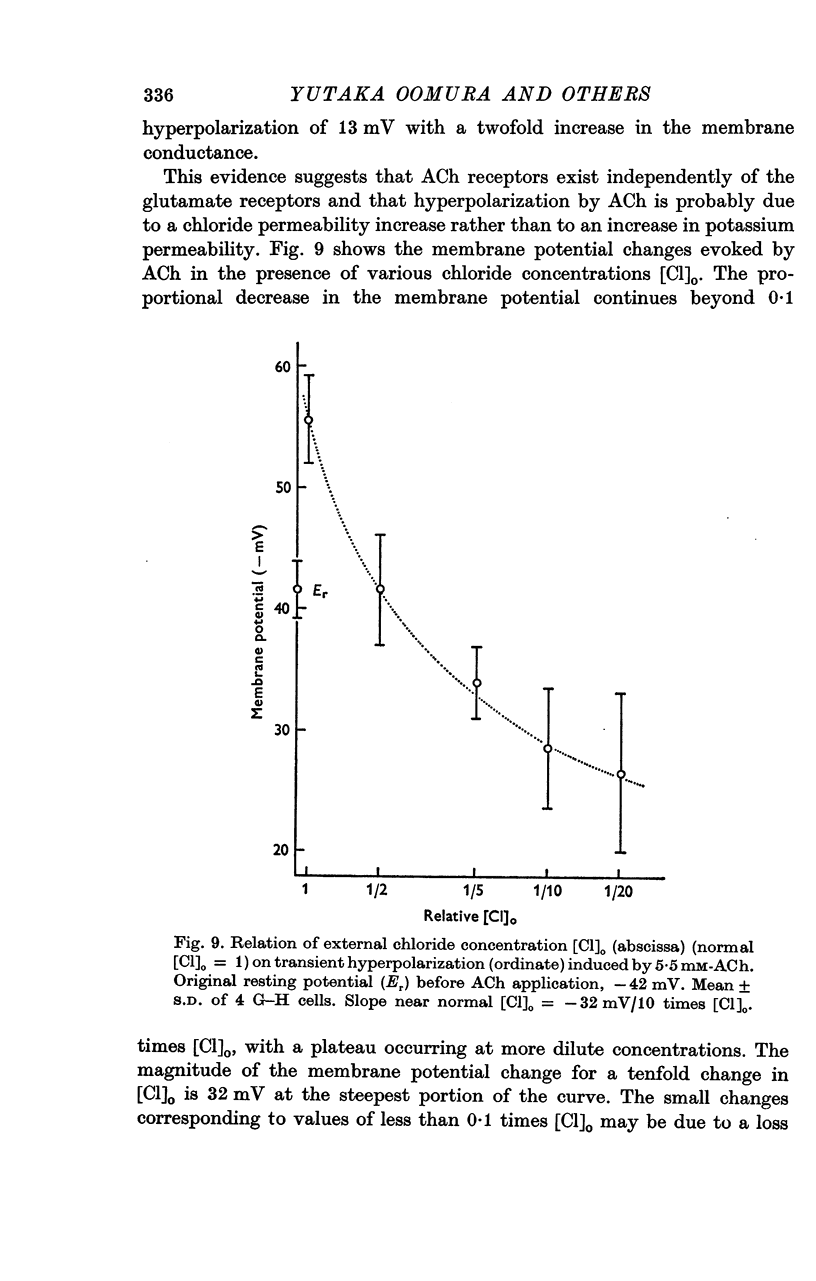
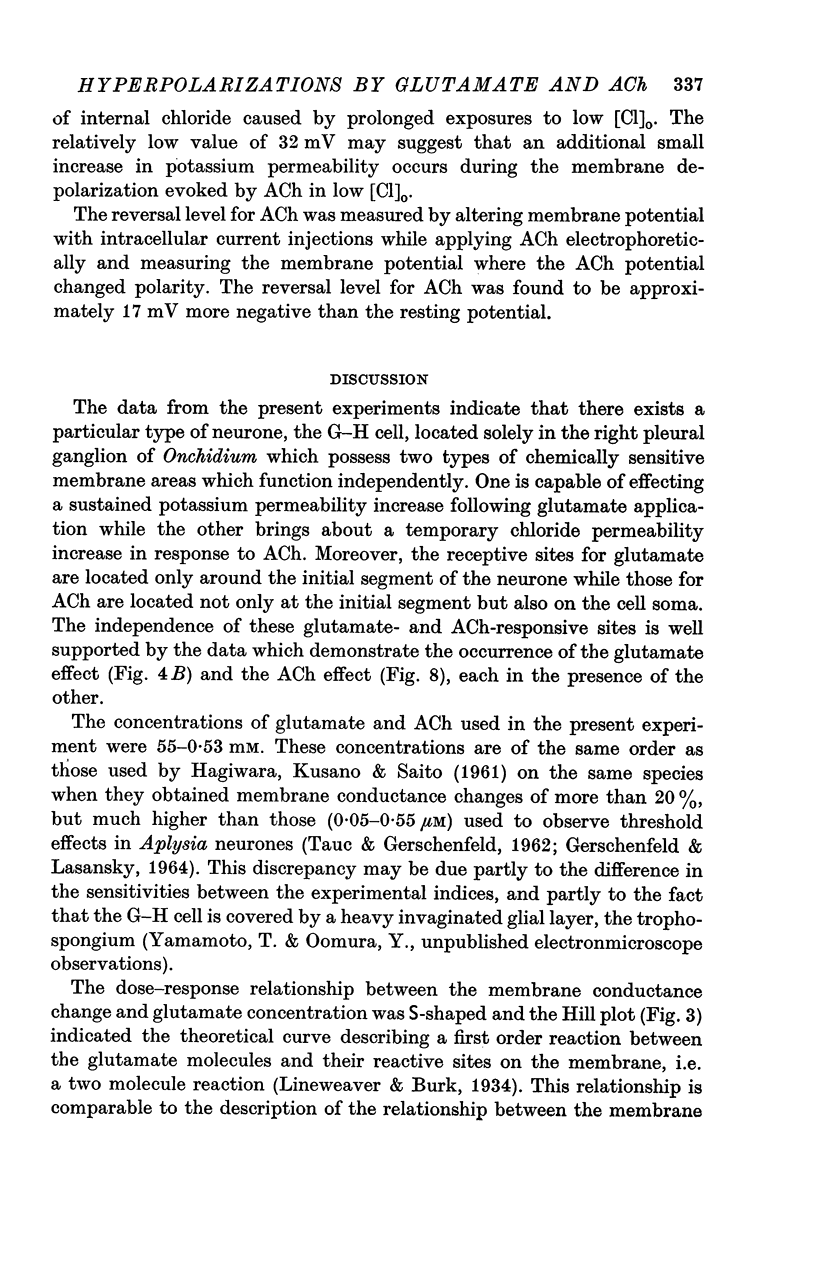
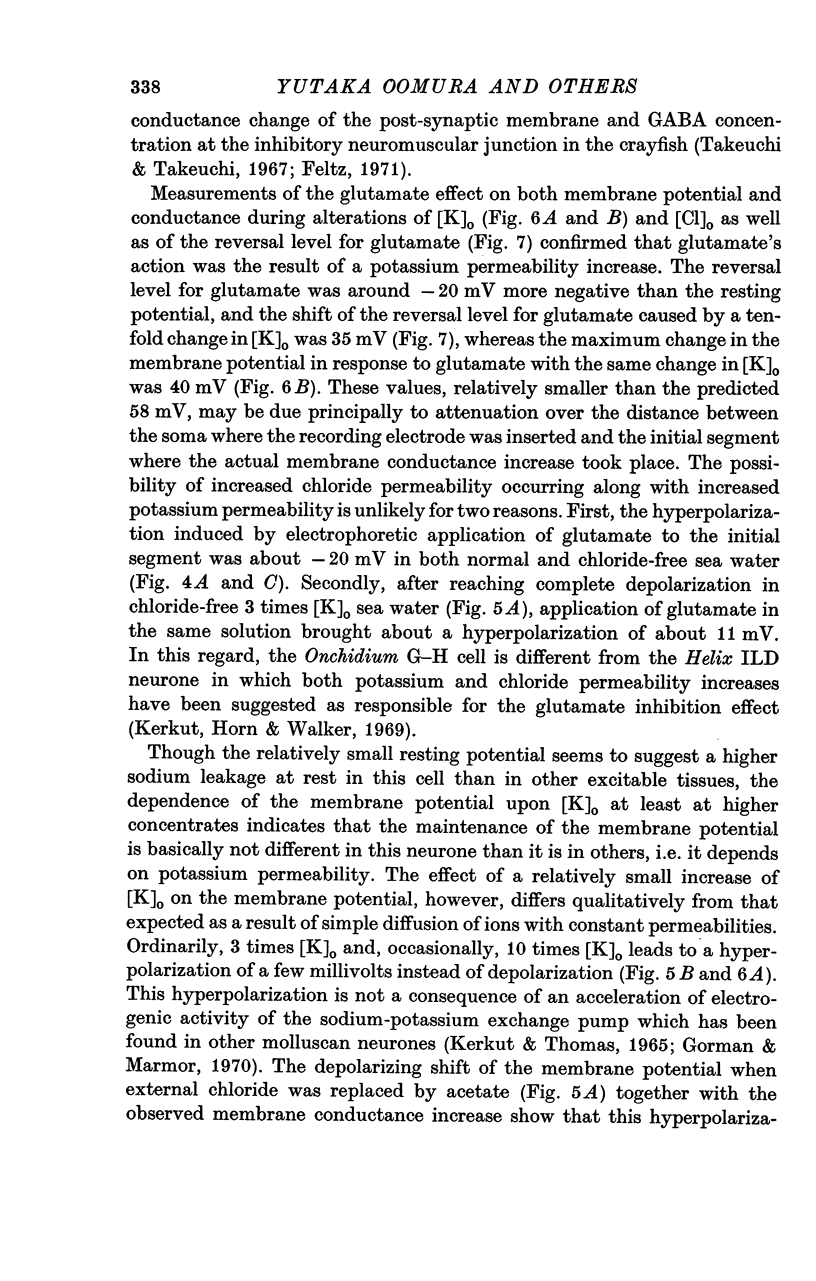
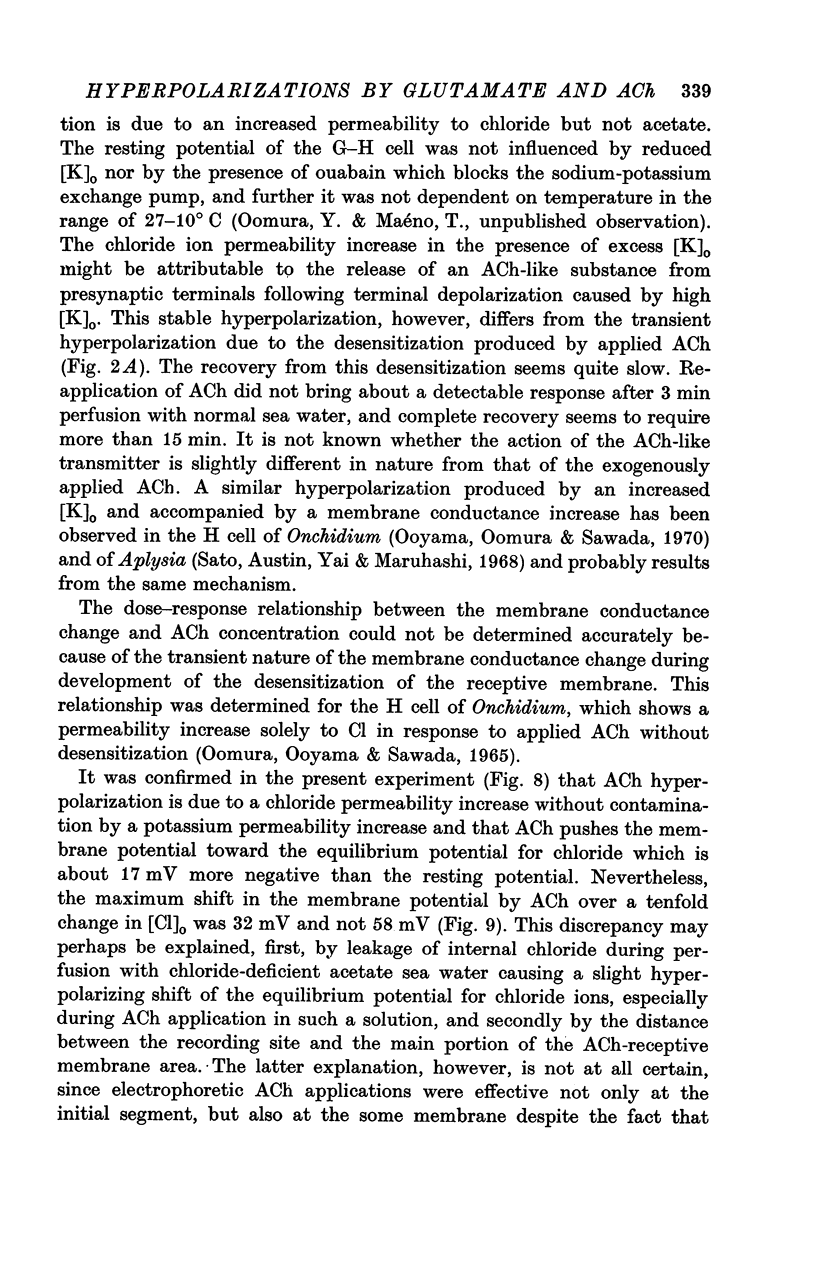
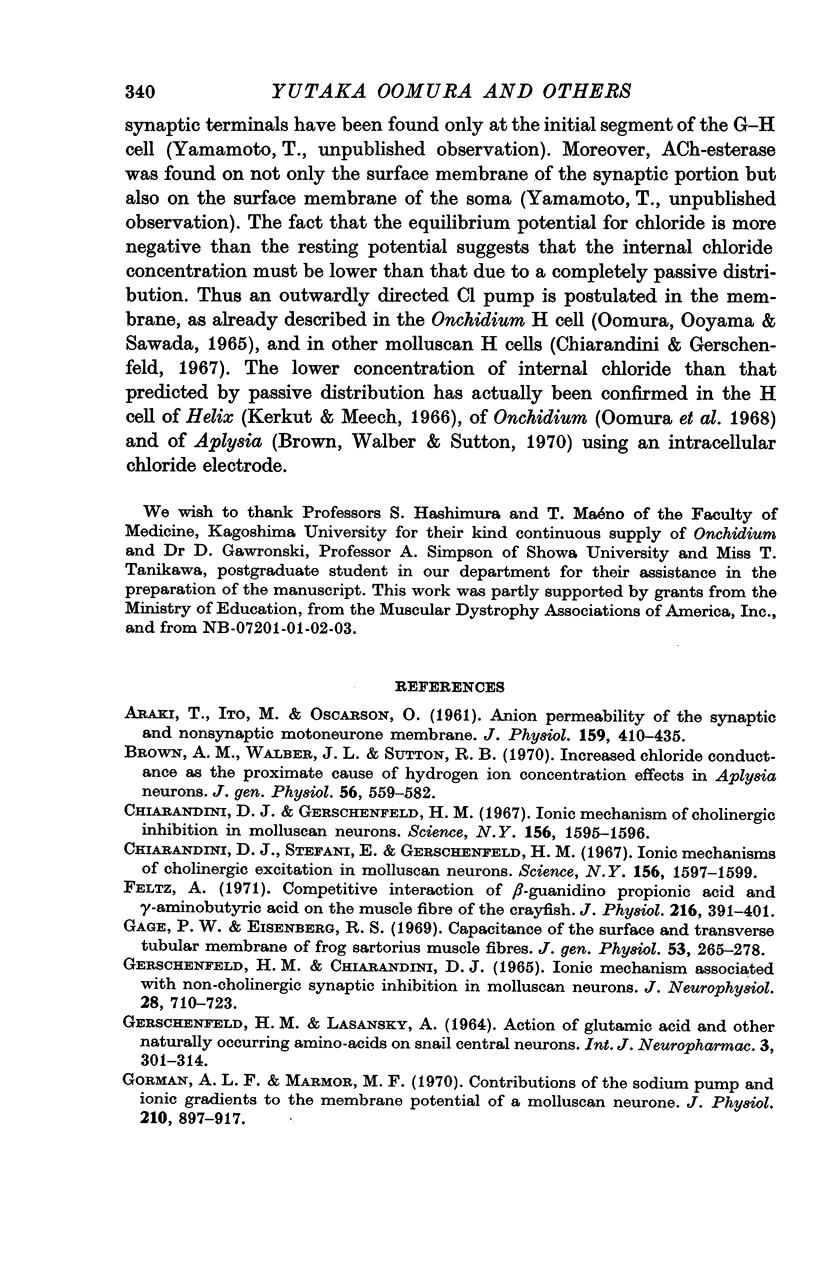
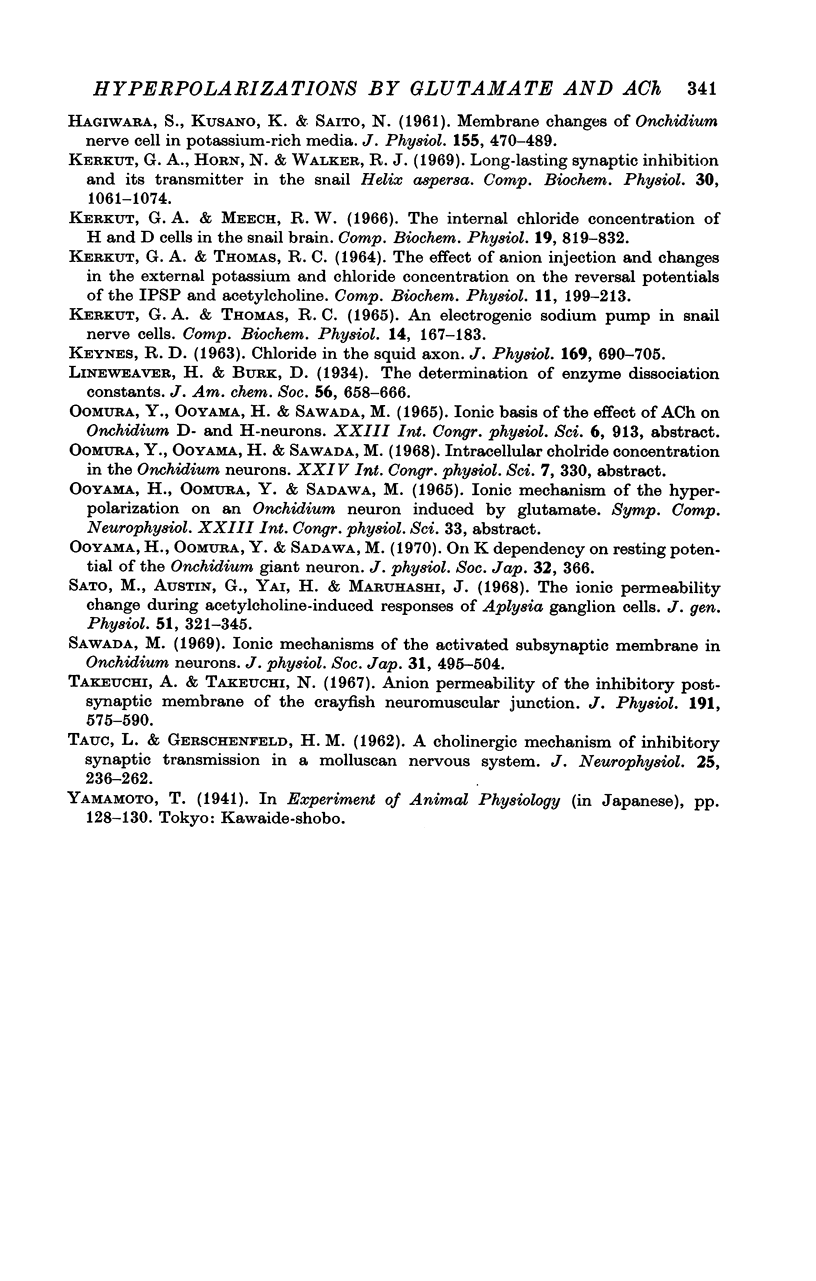
Selected References
These references are in PubMed. This may not be the complete list of references from this article.
- ARAKI T., ITO M., OSCARSSON O. Anion permeability of the synaptic and non-synaptic motoneurone membrane. J Physiol. 1961 Dec;159:410–435. doi: 10.1113/jphysiol.1961.sp006818. [DOI] [PMC free article] [PubMed] [Google Scholar]
- Brown A. M., Sutton R. B., Walker J. L., Jr Increased chloride conductance as the proximate cause of hydrogen ion concentration effects in Aplysia neurons. J Gen Physiol. 1970 Nov;56(5):559–582. doi: 10.1085/jgp.56.5.559. [DOI] [PMC free article] [PubMed] [Google Scholar]
- Chiarandini D. J., Gerschenfeld H. M. Ionic mechanism of cholinergic inhibition in molluscan neurons. Science. 1967 Jun 23;156(3782):1595–1596. doi: 10.1126/science.156.3782.1595. [DOI] [PubMed] [Google Scholar]
- Chiarandini D. J., Stefani E., Gerschenfeld H. M. Ionic mechanisms of cholinergic excitation in molluscan neurons. Science. 1967 Jun 23;156(3782):1597–1599. doi: 10.1126/science.156.3782.1597. [DOI] [PubMed] [Google Scholar]
- Feltz A. Competitive interaction of beta-guanidino propionic acid and gamma-aminobutyric acid on the muscle fibre of the crayfish. J Physiol. 1971 Jul;216(2):391–401. doi: 10.1113/jphysiol.1971.sp009531. [DOI] [PMC free article] [PubMed] [Google Scholar]
- GERSCHENFELD H. M., CHIARANDINI D. J. IONIC MECHANISM ASSOCIATED WITH NON-CHOLINERGIC SYNAPTIC INHIBITION IN MOLLUSCAN NEURONS. J Neurophysiol. 1965 Jul;28:710–723. doi: 10.1152/jn.1965.28.4.710. [DOI] [PubMed] [Google Scholar]
- GERSCHENFELD H. M., LASANSKY A. ACTION OF GLUTAMIC ACID AND OTHER NATURALLY OCCURRING AMINO-ACIDS ON SNAIL CENTRAL NEURONS. Int J Neuropharmacol. 1964 Jul;3:301–314. doi: 10.1016/0028-3908(64)90022-x. [DOI] [PubMed] [Google Scholar]
- Gage P. W., Eisenberg R. S. Capacitance of the surface and transverse tubular membrane of frog sartorius muscle fibers. J Gen Physiol. 1969 Mar;53(3):265–278. doi: 10.1085/jgp.53.3.265. [DOI] [PMC free article] [PubMed] [Google Scholar]
- Gorman A. L., Marmor M. F. Contributions of the sodium pump and ionic gradients to the membrane potential of a molluscan neurone. J Physiol. 1970 Nov;210(4):897–917. doi: 10.1113/jphysiol.1970.sp009248. [DOI] [PMC free article] [PubMed] [Google Scholar]
- HAGIWARA S., KUSANO K., SAITO N. Membrane changes of Onchidium nerve cell in potassium-rich media. J Physiol. 1961 Mar;155:470–489. doi: 10.1113/jphysiol.1961.sp006640. [DOI] [PMC free article] [PubMed] [Google Scholar]
- KERKUT G. A., THOMAS R. C. AN ELECTROGENIC SODIUM PUMP IN SNAIL NERVE CELLS. Comp Biochem Physiol. 1965 Jan;14:167–183. doi: 10.1016/0010-406x(65)90017-4. [DOI] [PubMed] [Google Scholar]
- KERKUT G. A., THOMAS R. C. THE EFFECT OF ANION INJECTION AND CHANGES IN THE EXTERNAL POTASSIUM AND CHLORIDE CONCENTRATION ON THE REVERSAL POTENTIALS OF THE IPSP AND ACETYLCHOLINE. Comp Biochem Physiol. 1964 Feb;11:199–213. doi: 10.1016/0010-406x(64)90163-x. [DOI] [PubMed] [Google Scholar]
- KEYNES R. D. CHLORIDE IN THE SQUID GIANT AXON. J Physiol. 1963 Dec;169:690–705. doi: 10.1113/jphysiol.1963.sp007289. [DOI] [PMC free article] [PubMed] [Google Scholar]
- Kerkut G. A., Horn N., Walker R. J. Long-lasting synaptic inhibition and its transmitter in the snail Helix aspersa. Comp Biochem Physiol. 1969 Sep 15;30(6):1061–1074. doi: 10.1016/0010-406x(69)91044-5. [DOI] [PubMed] [Google Scholar]
- Sato M., Austin G., Yai H., Maruhashi J. The ionic permeability changes during acetylcholine-induced responses of Aplysia ganglion cells. J Gen Physiol. 1968 Mar;51(3):321–345. doi: 10.1085/jgp.51.3.321. [DOI] [PMC free article] [PubMed] [Google Scholar]
- Sawada M. [Ionic mechanisms of the activated subsynaptic membrane in Onchidium neurons]. Nihon Seirigaku Zasshi. 1969 Aug 31;31(8):491–504. [PubMed] [Google Scholar]
- TAUC L., GERSCHENFELD H. M. A cholinergic mechanism of inhibitory synaptic transmission in a molluscan nervous system. J Neurophysiol. 1962 Mar;25:236–262. doi: 10.1152/jn.1962.25.2.236. [DOI] [PubMed] [Google Scholar]
- Takeuchi A., Takeuchi N. Anion permeability of the inhibitory post-synaptic membrane of the crayfish neuromuscular junction. J Physiol. 1967 Aug;191(3):575–590. doi: 10.1113/jphysiol.1967.sp008269. [DOI] [PMC free article] [PubMed] [Google Scholar]


